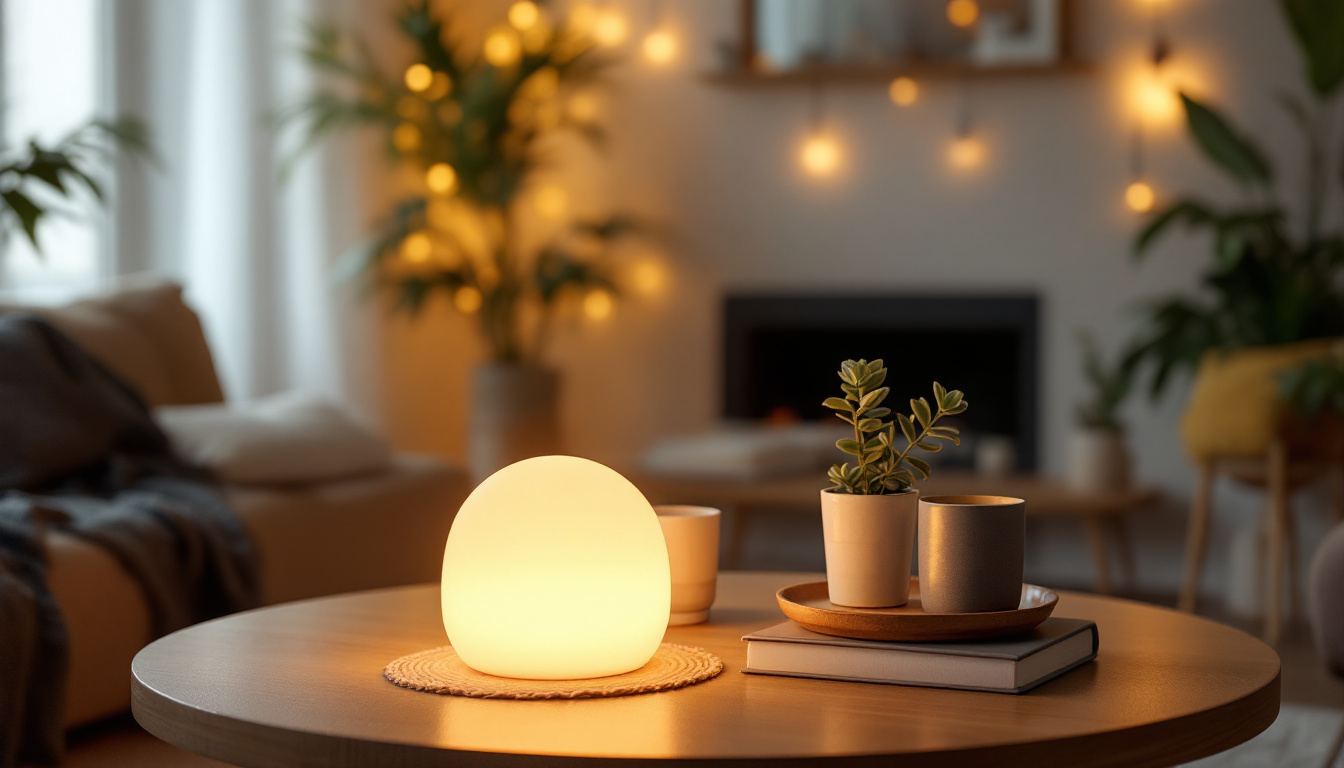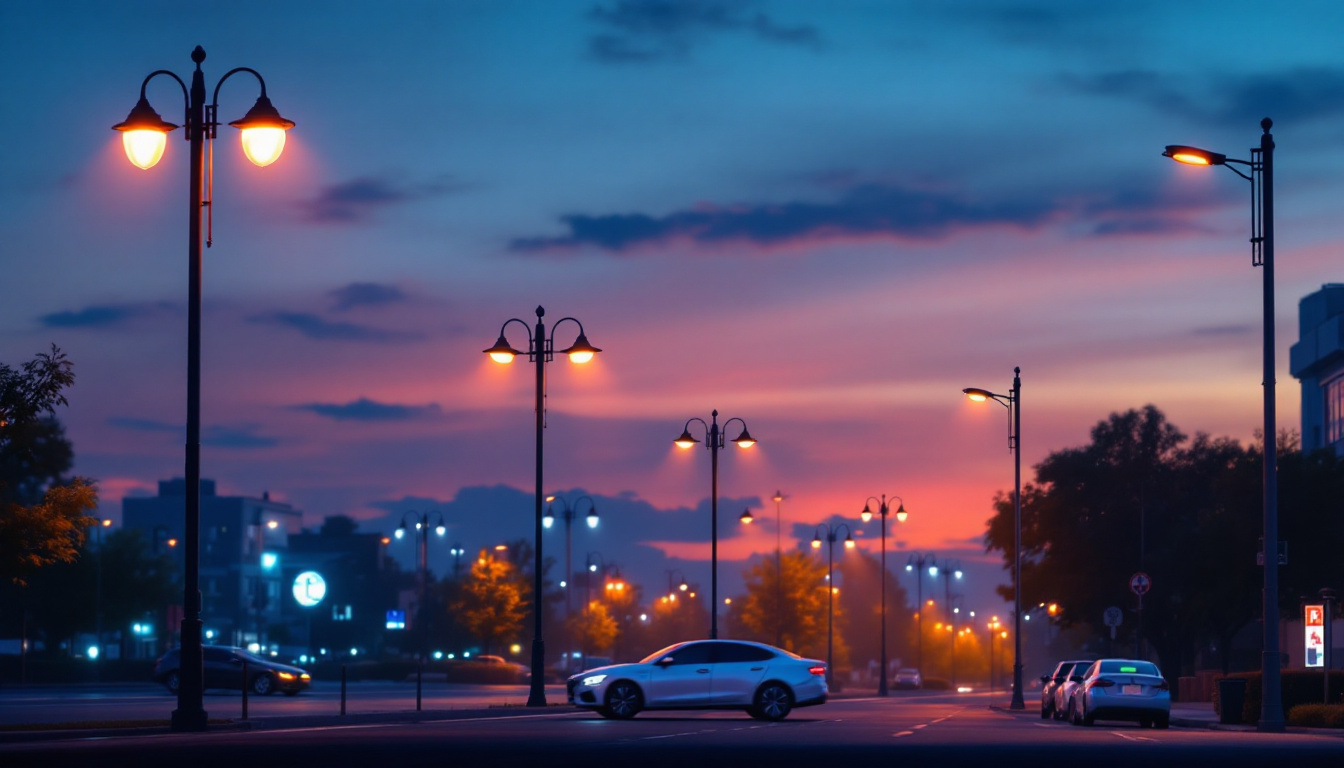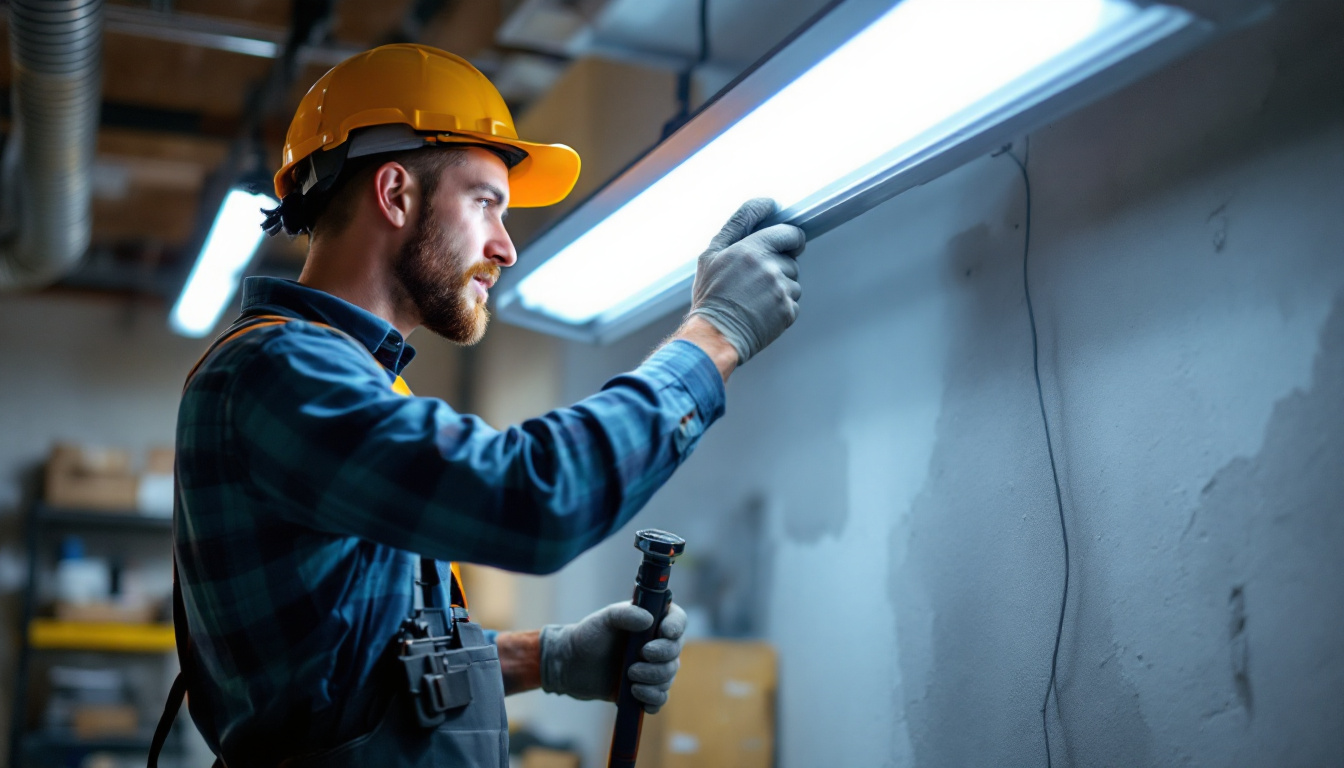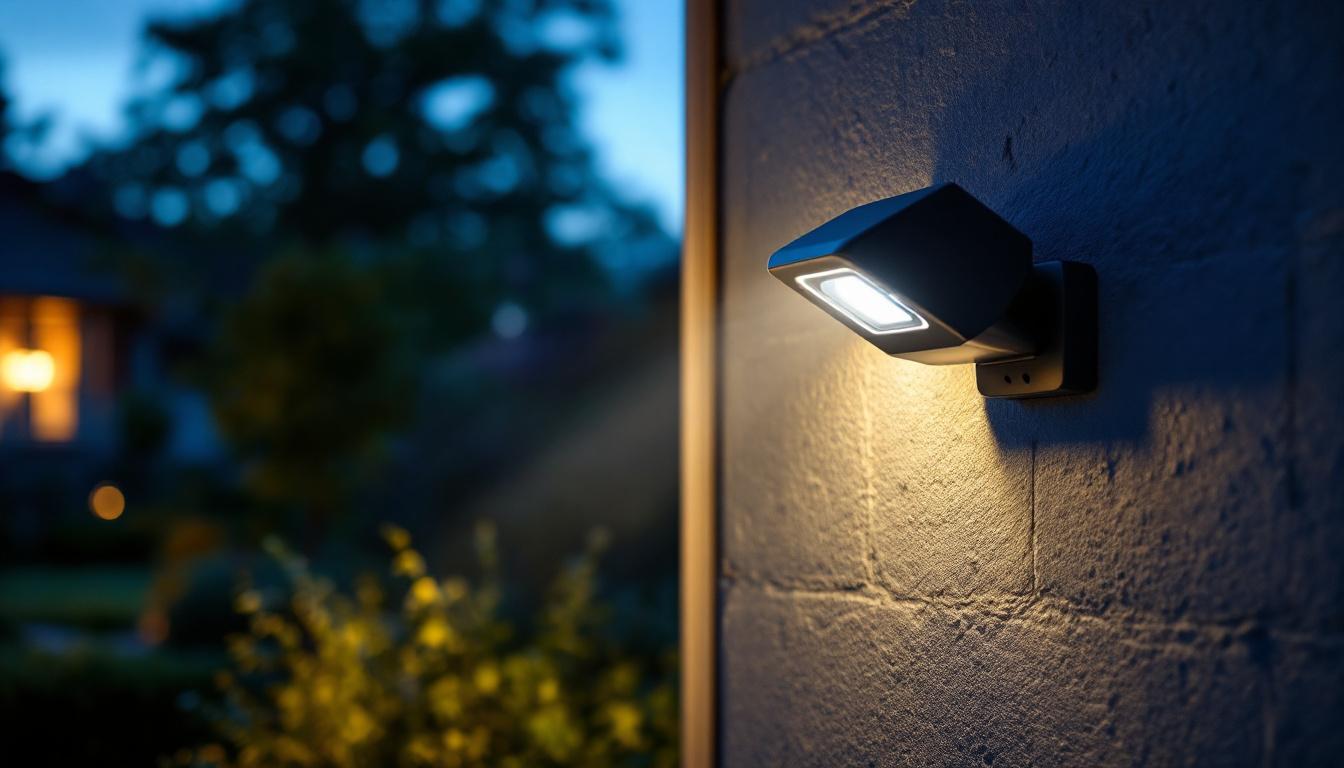
The realm of industrial outdoor lighting has undergone a significant transformation over the years, driven by technological advancements, changing regulations, and the growing emphasis on energy efficiency. As lighting contractors, understanding these developments is crucial for staying ahead in a competitive market. This article delves into the evolution of industrial outdoor lights, exploring key innovations, design trends, and the future of lighting in industrial settings.
To appreciate the current state of industrial outdoor lighting, it’s essential to look back at its origins. Initially, outdoor lighting was rudimentary, primarily relying on incandescent bulbs and basic fixtures. These early systems provided minimal illumination and often fell short in terms of energy efficiency and durability. In many cases, the lighting was inadequate for the needs of nighttime operations, leading to safety concerns and reduced productivity in various industrial settings.
As industries expanded and outdoor operations increased, the demand for more effective lighting solutions grew. This led to the introduction of high-intensity discharge (HID) lamps, which offered brighter illumination and improved performance. However, these systems had their drawbacks, including longer warm-up times and higher energy consumption. Furthermore, the heat generated by HID lamps often posed additional challenges, requiring careful management to prevent overheating and ensure operational safety.
The introduction of LED technology marked a pivotal moment in the evolution of industrial outdoor lighting. LEDs offered a multitude of benefits, including significantly lower energy consumption, longer lifespans, and reduced maintenance costs. Lighting contractors began to recognize the advantages of LEDs, leading to a gradual shift away from traditional lighting solutions. This transition not only improved the efficiency of lighting systems but also contributed to a decrease in operational costs for businesses, allowing them to allocate resources more effectively.
Moreover, the versatility of LED fixtures allowed for innovative designs that could cater to various industrial needs. From floodlights to wall packs, the adaptability of LED technology has transformed how outdoor spaces are illuminated, enhancing safety and productivity in industrial environments. The ability to customize lighting intensity and color temperature has also enabled facilities to create tailored lighting solutions that meet specific operational requirements, further optimizing workflow and employee comfort.
As concerns over environmental sustainability have grown, so too have regulations governing outdoor lighting. Many regions have implemented stricter guidelines aimed at reducing energy consumption and minimizing light pollution. These regulations have prompted lighting contractors to adopt more sustainable practices, including the use of energy-efficient fixtures and smart lighting controls. The integration of motion sensors and timers has allowed for more efficient use of lighting, ensuring that lights are only activated when necessary, which not only conserves energy but also extends the lifespan of the fixtures.
In response to these changes, manufacturers have developed products that not only comply with regulations but also promote sustainability. For instance, solar-powered outdoor lights have gained popularity, providing an eco-friendly alternative that harnesses renewable energy. This shift not only benefits the environment but also aligns with the growing demand for corporate social responsibility in the industrial sector. Additionally, the rise of smart city initiatives has further influenced the development of outdoor lighting solutions, as cities seek to integrate technology that enhances public safety while reducing their carbon footprint. The future of industrial outdoor lighting is not just about illumination; it’s about creating a sustainable and efficient environment that supports both operational needs and environmental stewardship.
The evolution of industrial outdoor lighting is not solely about functionality; design and aesthetic appeal have also become increasingly important. Modern industrial facilities often prioritize the visual aspect of lighting, recognizing its role in enhancing the overall ambiance and safety of outdoor spaces. The integration of artistic elements into lighting design can transform mundane industrial environments into visually striking landscapes, creating a sense of place that resonates with employees and visitors alike.
Innovative designs have emerged, incorporating sleek lines and contemporary materials that complement the architecture of industrial buildings. Lighting contractors are now tasked with selecting fixtures that not only meet performance standards but also align with the aesthetic vision of their clients. This shift has led to collaborations between architects, designers, and lighting professionals, fostering a holistic approach to industrial design that embraces both form and function. The result is a more cohesive visual narrative that speaks to the identity of the industrial space.
The rise of smart technology has revolutionized the lighting industry, allowing for greater control and efficiency. Smart outdoor lighting systems enable users to adjust brightness levels, set schedules, and monitor energy usage remotely. This level of control not only enhances convenience but also contributes to significant energy savings. Additionally, many smart systems can integrate with other building management technologies, creating a seamless network that optimizes energy consumption across various systems.
For lighting contractors, integrating smart lighting solutions into industrial projects presents both challenges and opportunities. While the initial installation may require specialized knowledge, the long-term benefits of reduced energy costs and improved operational efficiency make it a worthwhile investment. Moreover, as businesses increasingly seek sustainable practices, the ability to provide smart lighting solutions can position contractors as leaders in the industry, appealing to clients who prioritize eco-friendly technologies.
Industrial outdoor lights must withstand harsh environmental conditions, making durability a key consideration in their design. Advances in materials and engineering have led to the development of fixtures that are not only robust but also resistant to corrosion, moisture, and extreme temperatures. Innovations such as LED technology have further enhanced durability, as these lights have longer lifespans and lower heat output compared to traditional options, reducing the risk of failure in challenging conditions.
Lighting contractors must prioritize products that meet these durability standards, ensuring that installations remain functional and safe over time. This focus on resilience not only enhances the longevity of lighting systems but also minimizes maintenance efforts, allowing contractors to provide added value to their clients. Additionally, the use of weather-resistant fixtures can lead to improved safety for workers and visitors, as reliable lighting is crucial in preventing accidents and ensuring visibility in outdoor industrial environments. As the demand for sustainable and durable lighting solutions continues to grow, contractors who stay ahead of these trends will be well-positioned to meet the evolving needs of the industry.
Energy efficiency has become a central theme in the evolution of industrial outdoor lighting. As energy costs continue to rise, industries are seeking solutions that not only reduce consumption but also lower operational expenses. Lighting contractors play a vital role in guiding clients toward energy-efficient options that align with their budget and sustainability goals.
LED technology has been at the forefront of this movement, offering a dramatic reduction in energy usage compared to traditional lighting. Additionally, advancements in lighting controls, such as occupancy sensors and dimmers, further enhance energy efficiency by ensuring lights are only used when needed.
For many industrial clients, the decision to invest in energy-efficient lighting solutions hinges on the potential return on investment. Lighting contractors must be prepared to present a compelling case that highlights the long-term savings associated with modern lighting technologies.
By conducting energy audits and providing detailed calculations of potential savings, contractors can demonstrate how the initial costs of upgrading to energy-efficient lighting can be recouped over time. This approach not only helps clients make informed decisions but also positions contractors as trusted advisors in the lighting industry.
Real-world examples can be powerful tools for illustrating the benefits of modern industrial outdoor lighting. Case studies showcasing successful installations can help lighting contractors communicate the advantages of new technologies and designs to potential clients.
For instance, a manufacturing facility that transitioned to LED lighting may have experienced a significant reduction in energy costs while improving visibility in outdoor areas. Sharing such success stories can inspire confidence in clients and encourage them to consider similar upgrades.
As the lighting industry continues to evolve, several trends are likely to shape the future of industrial outdoor lighting. Staying informed about these developments will be essential for lighting contractors seeking to maintain a competitive edge.
One of the most promising trends is the increasing integration of renewable energy sources into lighting systems. Solar-powered outdoor lights and hybrid solutions that combine solar and traditional power sources are gaining traction, offering sustainable alternatives that align with global energy goals.
The future of industrial outdoor lighting will also see further advancements in lighting controls. The Internet of Things (IoT) is paving the way for interconnected lighting systems that can communicate with other devices and systems within a facility. This level of integration allows for enhanced automation, data collection, and real-time monitoring.
Lighting contractors will need to familiarize themselves with these emerging technologies to provide clients with the most efficient and effective solutions. By embracing innovation, contractors can position themselves as leaders in the industry and ensure their projects meet the evolving needs of their clients.
Another trend gaining momentum is the concept of human-centric lighting, which focuses on creating lighting environments that promote well-being and productivity. This approach considers factors such as color temperature, intensity, and timing to enhance the overall experience of individuals working in industrial settings.
Lighting contractors who understand the principles of human-centric lighting will be better equipped to design solutions that not only meet functional requirements but also contribute to the health and comfort of workers. This holistic approach to lighting design is likely to become increasingly important as industries recognize the value of employee well-being.
The evolution of industrial outdoor lighting reflects broader trends in technology, sustainability, and design. As lighting contractors navigate this dynamic landscape, staying informed about advancements and emerging trends will be essential for success. By embracing innovations such as LED technology, smart lighting solutions, and human-centric design, contractors can deliver exceptional value to their clients while contributing to a more sustainable future.
As the industry continues to evolve, the role of lighting contractors will be pivotal in shaping the future of industrial outdoor lighting. By adapting to change and prioritizing energy efficiency and design, contractors can ensure their projects not only meet current demands but also anticipate future needs. Embracing this evolution will ultimately lead to safer, more efficient, and more sustainable industrial environments.
As you embrace the future of industrial outdoor lighting, LumenWholesale is here to support your journey. We provide lighting contractors with the highest quality, spec-grade lighting products at the most competitive wholesale prices. Our commitment to excellence ensures that you have access to an extensive selection of reliable and high-performance lighting solutions that meet the latest industry standards. With the convenience of free shipping and the elimination of middleman markups, we make it easy for you to get premium lighting at the best value for all your projects. Elevate your lighting game and experience the ideal combination of quality, affordability, and convenience. Take the next step towards a brighter, more sustainable future and explore our collection at LumenWholesale today.

Discover how Jelly Light is transforming lighting projects with its innovative design and versatility.

Discover essential insights for lighting contractors in our comprehensive guide on light poles.

Discover the step-by-step process of replacing fluorescent lights with energy-efficient LEDs, as expert lighting contractors share their top insights and tips.

Discover the essential checklist for lighting contractors when installing outdoor motion detector lights with cameras.